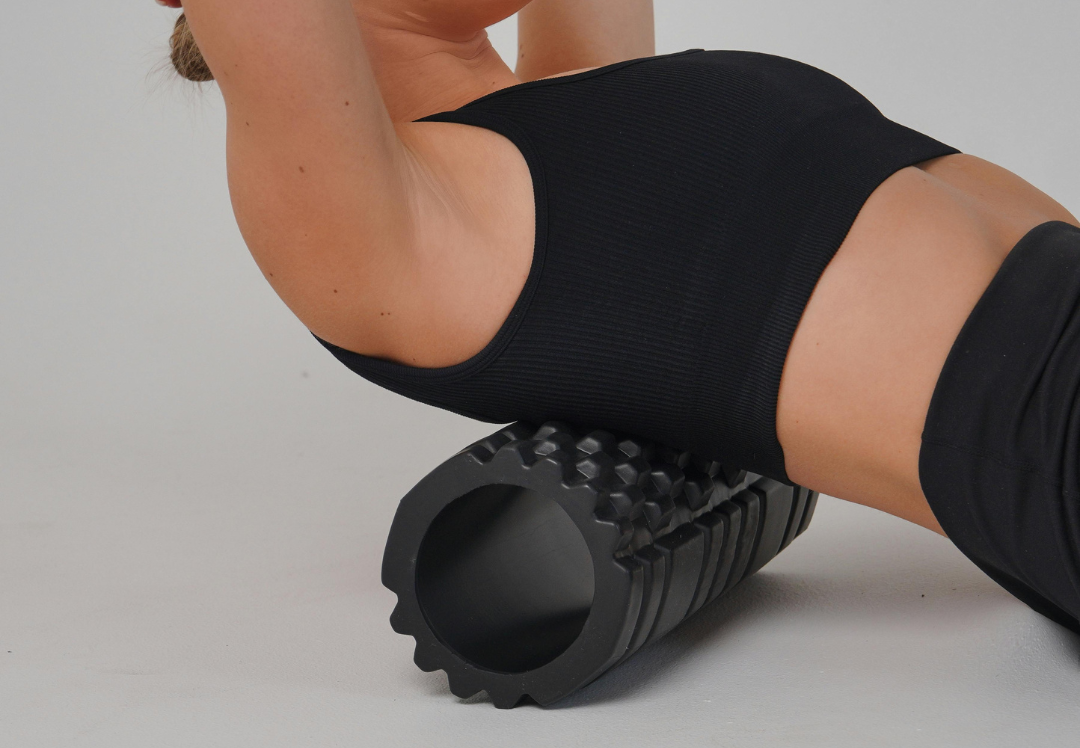How to Use Foam Rolling for Better Recovery
July 1
At The MVMT Lab in Fort Lauderdale, one of the most common tools we recommend for recovery is also one of the most misunderstood: the foam roller.
Foam rolling—also known as self-myofascial release (SMR)—has earned a permanent spot in many warm-up and cooldown routines. But is it really effective? The short answer: yes—when used properly. Backed by research, foam rolling can significantly improve recovery, mobility, and even performance, without the need for high-tech or high-cost interventions.
What Does Foam Rolling Actually Do?
Foam rolling works by applying pressure to the fascia—the connective tissue surrounding muscles. Over time, fascia can become stiff or develop adhesions due to poor posture, repetitive movements, or intense training. When you use a foam roller, you’re stimulating mechanoreceptors in the fascia and muscles, which can help:
Reduce muscle tightness
Increase blood flow
Improve range of motion
Decrease delayed onset muscle soreness (DOMS)
A 2015 study published in the Journal of Athletic Training found that foam rolling post-exercise reduced muscle soreness and improved sprint and power performance in athletes 24 to 72 hours after activity (MacDonald et al., 2015). Another meta-analysis in Sports Medicine confirmed that foam rolling can improve flexibility and temporarily decrease muscle stiffness, especially when paired with dynamic stretching (Wiewelhove et al., 2019).
How to Use Foam Rolling the Right Way
The effectiveness of foam rolling depends heavily on technique, duration, and consistency. Here’s how I coach clients at MVMT Lab to get the most out of it:
1. Go Slow and Controlled
Don’t rush. Spend at least 30–60 seconds on each muscle group. Move slowly, about one inch per second. If you find a tender spot, pause and breathe into it for 10–20 seconds before continuing.
2. Target the Right Areas
Focus on muscle groups that are prone to tightness or overuse:
Quads and hip flexors
Hamstrings and glutes
Calves and peroneals
Upper back and lats
Avoid rolling directly over joints, bones, or inflamed tissues.
3. Pair with Movement
Foam rolling is most effective when combined with active recovery techniques. Try foam rolling before a mobility circuit or light cardio to increase tissue temperature and range of motion.
4. Use Proper Equipment
Not all foam rollers are created equal. Softer rollers are great for beginners or sensitive areas, while firmer or textured rollers provide deeper pressure and are more effective for stubborn tight spots.
When Should You Foam Roll?
You can use foam rolling:
Before workouts to prime the body and improve range of motion
After workouts to reduce muscle soreness and aid recovery
On rest days as part of active recovery and nervous system downregulation
Foam rolling can also help decrease sympathetic nervous system dominance, shifting your body into a more parasympathetic, rest-and-digest state—especially when paired with diaphragmatic breathing.
The Takeaway
Foam rolling isn’t just a trendy fitness fad—it’s a science-backed recovery tool that can help you feel better, move better, and perform better.
At The MVMT Lab, we incorporate foam rolling into recovery sessions, mobility work, and even during injury rehabilitation. The goal is not just to “work out the knots,” but to restore optimal tissue health and keep you moving at your best.
References:
MacDonald, G. Z., Button, D. C., Drinkwater, E. J., & Behm, D. G. (2014). Foam Rolling as a Recovery Tool after an Intense Bout of Physical Activity. Journal of Athletic Training, 49(3), 326–331. https://doi.org/10.4085/1062-6050-49.3.08
Wiewelhove, T., Döweling, A., Schneider, C., et al. (2019). A Meta-Analysis of the Effects of Foam Rolling on Performance and Recovery. Sports Medicine, 49, 781–796. https://doi.org/10.1007/s40279-018-1010-1
